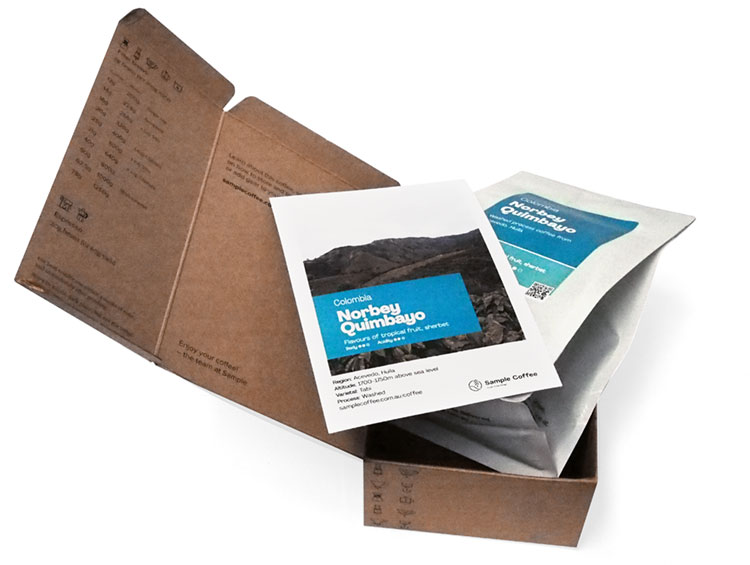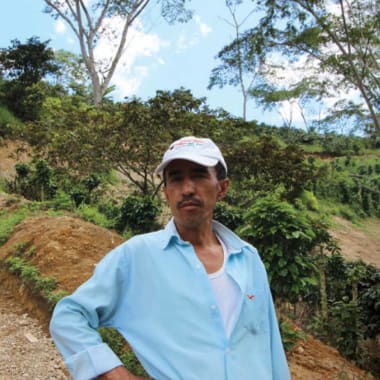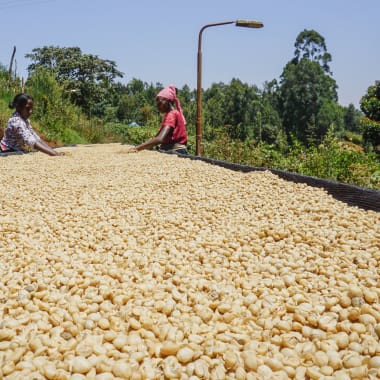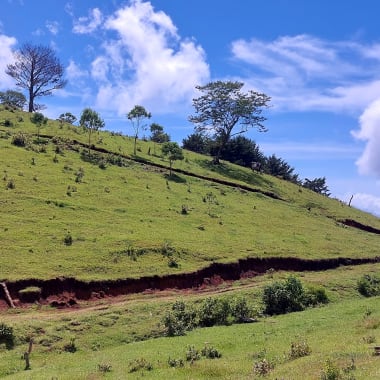-
Producer
-
Small Holder Farmers
-
Country
- Ethiopia
-
Region
-
Gedeo, Yirgacheffe
-
Altitude
-
1795-1900m above sea level
-
Variety
-
Process
-
Harvested
-
December 2017
-
Importer
-
Cafe Imports
-
Body
-
Light
-
Acidity
-
Citric
-
Tasting notes
-
Apricot, lime, and complex florals
-
Roast style
Ethiopia
Kochere
KoreKore is the kebele (village) where this coffee is grown and processed.
We’ve showcased other coffees from the Kochere woreda (district) in previous years. The district sits within the famous coffee region of Yirgacheffe, and Kore itself is about 25 kilometers from the centre of Yirgacheffe Town.
Also nearby is the small village of Ch'elelek'tu, which you might recognise as another origin we’ve featured in the past.
As with most Ethiopian coffees, the beans are what’s known as Ethiopian Heirloom varietal, which means they’re not a specific varietal but instead a mix of the locally occurring varietals.
These naturally occurring hybrids are both disease resistant and also gives Ethiopian coffee the unique sweet flavour and sparkling acidity that we look forward to with each harvest.
What does acidity mean?
You might have spotted that this coffee is described as having citric acidity.
When we talk about acidity, we’re talking about flavour and vibrancy that comes from types of acid that occur naturally in foods. The easiest example of this is biting into a green apple. This coffee has a red apple acidity which refers to malic acid that’s in apple and rhubarb.
In others coffees you might taste citric acids (similar to limes, oranges and lemons), tartaric acids (like green grapes), or acetic acids (by itself a vinegary flavour, but in small amounts it’s more like wine).
Learn everything about this coffee:
Ethical, traceable sourcing
This page has all the sourcing information (variety, process, region, story, importer, and more) that our importers share with us, and give us permission to use.
The transparency helps us talk confidently about the quality and background of our product, and it helps you know exactly what you’re buying.
Learn more:
Coffee page transparency legend
Our coffee philosophy
Our business approach
Fresh harvest coffee
We only source and roast coffee from each country’s latest harvest season (so the green coffee is never older than 1 year from the time of picking, processing and packing). This ensures the sensory qualities are always at their peak and unaffected by excessive ageing.
Roasted for espresso and filter (best enjoyed black)
Roast style: omni. Omni roasts are designed to brew and taste great both as espresso and filter. Our omni single origins generally sit on Agtron values in the ~70-60 value range. So, technically, they are somewhere in the lighter side of the medium spectrum.
Designed for espresso and filter brewing. Best enjoyed black.
Learn more:
Our Loring Kestrel S35 roaster
Our roasting style and approach
Best brewed within days 15-49 post-roast
The ‘fresh is best’ saying doesn’t apply to coffee (contrary to popular belief). Waiting before opening and brewing your bag of whole coffee beans helps develop peak flavour and acidity.
But heads up: if you buy pre-ground coffee, brew it as soon as possible.
Learn more:
Our recommended brewing window
Try our custom brewing recipes
Our recipes and ratios are tailored to our coffee sourcing and roasting styles, bringing the best flavour and feel out of each coffee.
For pour over, immersion, and other filter brewing styles, check our brew guides.
For our espresso single origins, we recommend a coffee:yield ratio of 1:3:
- Dose: 20g ground coffee
- Yield: 60g espresso
- Total brew time: ~24-28 seconds
This is just a starting point! We encourage you to experiment, taste, and adjust to find the recipe that you enjoy the most.
Learn more:
Our espresso brew guide (single origin)
Brewing ratio calculator
Packaging and sustainability
- Bags: ABA-certified home compostable (AS 5810-2010)
- Labels: recyclable
- Valves (only on +250g bags): general waste
- Box and tape (online orders): recyclable
Learn more:
Our packaging
Variety
Ethiopian Heirloom variety
Heirloom (or sometimes Landrace) is an umbrella term that refers to all the coffee varietals endemic to Ethiopia.
The location
Coffee from Ethiopia
Seen as the birthplace of domesticated coffee, there are not many more exciting times at the Sample warehouse as when our fresh Ethiopian lots arrive. Legend says it’s our favourite origin…
The Yirgacheffe region of Ethiopia
Unique for its floral and highly aromatic coffees. Some our of very favourite and memorable Ethiopian coffees have emerged from this legendary region.
Farm processes
Washed process
Machines are used to remove the flesh from the coffee cherry before being fermented in water, washed again, and finally sun dried. This process tends to result in more distinct, cleaner flavours.

Subscribe to a world of coffee
Discover a new single origin coffee from Sample every 1-5 weeks with no delivery fees.
No up-front purchase, and you can pause, cancel, or change plans at any time.
Available to order online this week:

Colombia Jose Elcias Martinez Guzman Pink Bourbon
Flavours of mandarin, burnt orange, pineapple
Body Acidity
Washed Pink Bourbon
December 2024 harvest
Roasted omni for filter and espresso
Colombia Jose Elcias Martinez Guzman Pink Bourbon online
Kenya Karindundu Aa
Flavours of orange marmalade, grapefruit, Yunnan red tea
Body Acidity
Washed Batian, SL28, SL34, Ruiru 11
Roasted omni for filter and espresso
Kenya Karindundu Aa online
Ethiopia Girma Sintayehu Honey
Flavours of apricot, mango, coconut, pineapple
Body Acidity
Honey 75227, Wolisho
February 2025 harvest
Roasted omni for filter and espresso
Ethiopia Girma Sintayehu Honey online
El Salvador Manuel Castañeda
Flavours of toffee apple, cranberry, dulce de leche
Body Acidity
Honey Pacamara
March 2025 harvest
Roasted omni for filter and espresso
El Salvador Manuel Castañeda online